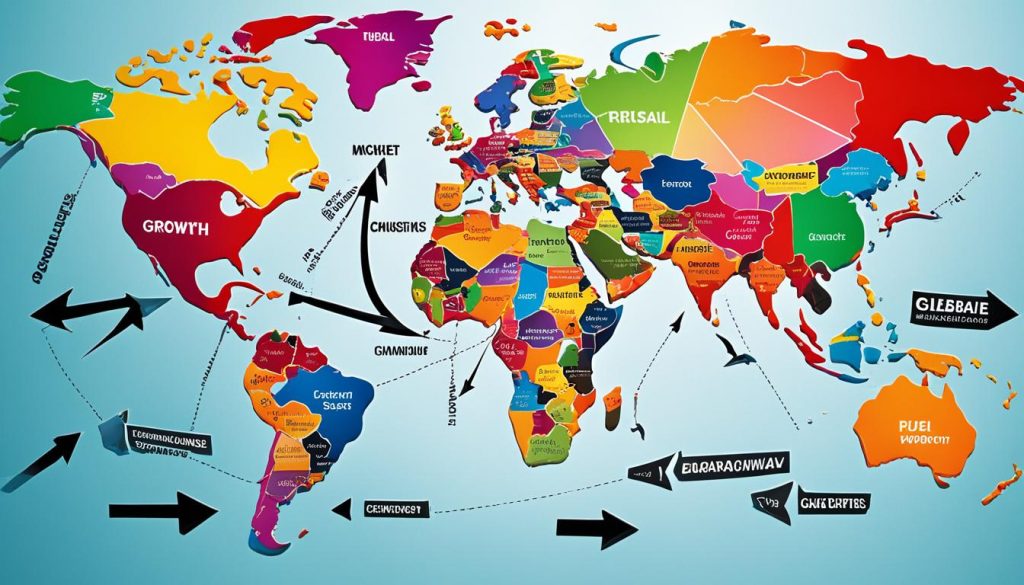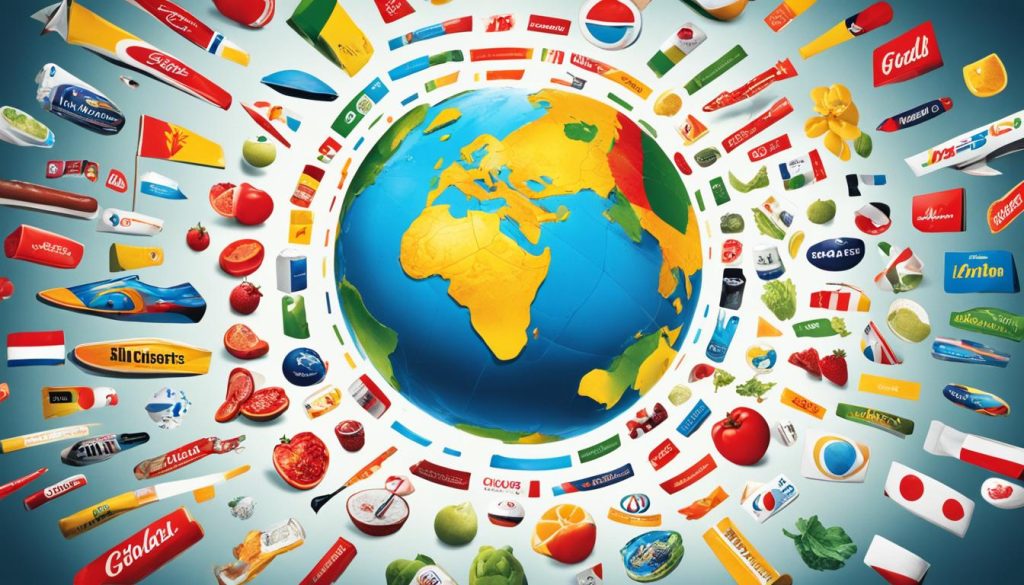In our world that’s more connected than ever, globalisation brings big challenges for huge companies. They strive to keep their brands the same worldwide while also adapting to what local people like. When you go around the world, it’s clear to see that international brands often look and feel different from local ones. For example, McDonald’s changes its menu to match local tastes by adding paneer in India or pita wraps in Greece. Coca-Cola, with its famous logo everywhere, uses the idea of global friendship to connect with people everywhere after WWII.
But, even these giant companies struggle to find the perfect mix of being globally appealing and truly fitting into local cultures. They’re really good at making their brand look the same everywhere. Yet, local businesses have an advantage because they really know and connect with the local culture and what people have liked for a long time. For international brands to be really successful, they must understand the local flavours and feelings deeply.
Key Takeaways
- Globalisation imposes significant challenges on brands striving for consistency.
- Local consumer trends often necessitate modifications to products.
- McDonald’s effectively customises its menu to align with regional preferences.
- Coca-Cola exemplifies a successful strategy of leveraging cultural sentiments.
- Local companies thrive due to their cultural familiarity and deep historical roots.
- Global brands need to navigate the balance between universal appeal and localisation.
Why Global Brands Struggle with Cultural Adaptation

Today’s world market requires understanding cultural adaptation for global brands. It’s key to knowing how local people see these brands. Not paying attention to cultural differences can lead to not meeting what consumers want. This might harm the brand’s reputation.
Importance of Cultural Sensitivity
Cultural sensitivity is key to fitting in different markets. Brands need to respect the local languages, norms, and how people behave. This helps them grow in many areas. For example, Nike has run sports campaigns that fit well with the cultures of various countries. This approach not only increases sales but also makes customers more loyal to the brand.
Historical Examples of Cultural Missteps
Many global marketing efforts have stumbled over cultural issues. A notable mishap was KFC’s slogan in China which mistakenly meant “Eat Your Fingers Off.” Although it didn’t ruin KFC, it showed how vital accurate localisation is. Dolce & Gabbana, however, faced a boycott in China because of insensitive ads. This hurt their image a lot. These stories show that understanding and adapting to local cultures is crucial. It helps avoid big mistakes.
Challenges of Market Segmentation and Consumer Behaviour

Grasping market segmentation in the global market is tough but key. It means understanding how different cultures think and buy. Because of this, brands must adapt their marketing to fit each region’s unique tastes.
This demands deep knowledge of how people behave as consumers, critical for making a brand popular locally. For example, in Brazil, bright and colourful adverts work well. Yet in Japan, simplicity and quality win people’s hearts.
Understanding Local Consumer Behaviour
At the heart of market segmentation is getting what local consumers like. The variety in cultures affects what people buy and how they communicate. This means a one-solution-fits-all strategy often doesn’t work well.
Brands like Coca-Cola excel by using local insights to shape their marketing. This shows that understanding and adapting to local tastes can lead to success.
Differences in Regional Preferences
Consumer likes vary a lot by region, impacting how brands should market themselves. For instance, Brazilians enjoy lively adverts, while the Japanese value subtlety and quality. Recognising these differences is crucial for marketing success.
Brands that align with local stories and values connect better with their audiences. This tailored approach helps in reaching people’s hearts and minds more effectively.
To win in various markets, global brands must get the hang of market segmentation and consumer behaviour. Embracing the diversity in cultures and honing local marketing strategies are steps towards building strong local ties and engaging customers better.
Not Fully Cater to Local Consumer Preferences

Global brands sometimes struggle to match local consumer tastes. This can hurt brand loyalty and consumer trust. Knowing the local culture is key to keeping brand value across different cultures.
Impact on Brand Loyalty
Ignoring the specific needs of local markets can lose brand loyalty. People prefer brands that value their cultural norms. This builds trust and loyalty. Ignoring cultural values can destroy confidence and lessen positive views, weakening the brand’s market position.
Case Studies of Brand Failures
Looking at real-life failures highlights the need for cultural sensitivity. Coors beer’s campaign failed in translation, offending many. This caused a big drop in consumer trust. Similarly, Dolce & Gabbana upset many in China with insensitive ads, leading to a boycott that damaged their brand value.
McDonald’s shows both good and bad localisation. They’ve adapted menus to fit local tastes well in some places. But they’ve also made mistakes that show the importance of understanding culture. These cases show how crucial it is for brands to pay attention to local preferences to maintain brand loyalty and market value.
Successful Global Brands that Nailed Localization

Many global brands find it tough to be popular worldwide while appealing locally. Some, though, effectively localize their offerings. They combine worldwide charm with local flavours, gaining global success and earning local trust.
Take McDonald’s for example. In India, it offers the McAloo Tikki burger, which is perfect for vegetarians. In Japan, McDonald’s serves the Teriyaki burger, matching local tastes. IKEA, too, adapts to local markets. Its smaller furniture in China is a hit, showing cultural alignment in branding matters.
Coca-Cola has also mastered this art. It tweaks its flavours and ads to fit local preferences. These efforts have helped Coca-Cola achieve global success. They’ve made strong local bonds by truly understanding their customers.
These examples show the importance of effective localization for global success. They prove it’s about more than just translation. Brands need to adapt their products and messages to fit into the local culture.
This focus on local relevance has helped these brands succeed globally. In today’s connected world, adapting to local cultures is crucial. It’s key for a brand’s long-lasting appeal and global reach.</0
How Product Customization Can Improve Local Appeal
Brands that grow globally find product customisation key for winning local hearts. By tailoring products for each area, they connect deeply with local tastes without losing their universal charm. This method boosts loyalty and helps them penetrate markets by meeting specific cultural needs.
Examples of Customised Products
Take Apple’s iPhone as an example. Its core design stays the same worldwide, but apps and features change to suit each place. McDonald’s, on the other hand, changes its menu to match local flavours. In India, they serve the McAloo Tikki burger, appealing to vegetarians. These examples show how combining a global presence with local sensitivity is crucial.
Balancing Cost Savings with Local Adaptation
Achieving a mix of cost efficiency and local customisation is critical. Companies can stay competitive by creating versatile products. These products are designed for easy changes, keeping costs low.
For instance, car makers produce standard models but add special accessories for different regions. This way, they enjoy large-scale production benefits while catering to unique local tastes.
In summary, product customisation is a must for brands aiming to succeed internationally. Blending worldwide appeal with a local touch is key to their success in the global market.











